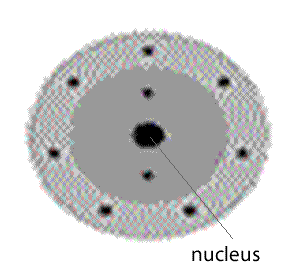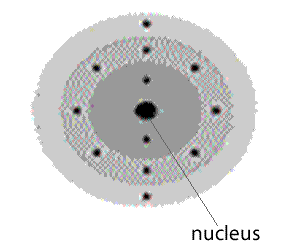Periodic table and the electrons
Periodic Table.
What is it?

|
|
The periodic table is a way of organizing known elements into groups with
similar properties. Mendelev was a Russian scientist who was first to
recognise that elements can be grouped together according to atomic mass. Look at the electronic configuration of each atom. Can you explain the trend in atomic radius? All elements in a particular group share similar properties. Elements in group 1 are very reactive metals, with the exception of hydrogen gas. These metals react readily with water to produce hydrogen gas. View the videos below
Cesium reacts more violently with water Elements in group 2 also react with water to form hydrogen gas but are not as reactive as group 1 elements. Magnesium Calcium |
Sodium |
|
Potassium |
|
|
Cesium |
|
|
Magnesium |
|
|
Calcium |
|
Notice how reactivity of metals increases as we go down a group. Compare the reactivity of sodium and potassium with water. Now compare the reactivity of calcium and magnesium with water. Is there a pattern? Elements in group 8 exist as gases and are very stable. These elements do not readily react with other elements. Elements in group 4, 5, 6,7 and 8 are nonmetals. Elements in group 1 have ONE electron in their outer most energy level. Similarly atoms in groups 2-8 have 2,3,4,5,6,7 or 8 electrons respectively. An element in period 2 has the second energy level as the last level to be occupied by electrons. Elements in period 4 have the forth energy level as the outer most level to be occupied by electrons. |
|
|
|
 |
|
|
An atom with 12 electrons will be expected to look like the atom on the left. So we can expect to find this element in the period 3, group 2. |
|
Draw the electronic structures of the elements Mg,Ca, Na and K . |
|
|
All elements in the same group
share similar properties. b) How do the elements in group one differ from those in group 8. c) An element with the atomic number 14 is found in group of the periodic table because it has . This element will be found in period of the periodic table because it has d) Do all elements in group 8 have 8 valence electrons? Explain |
|
